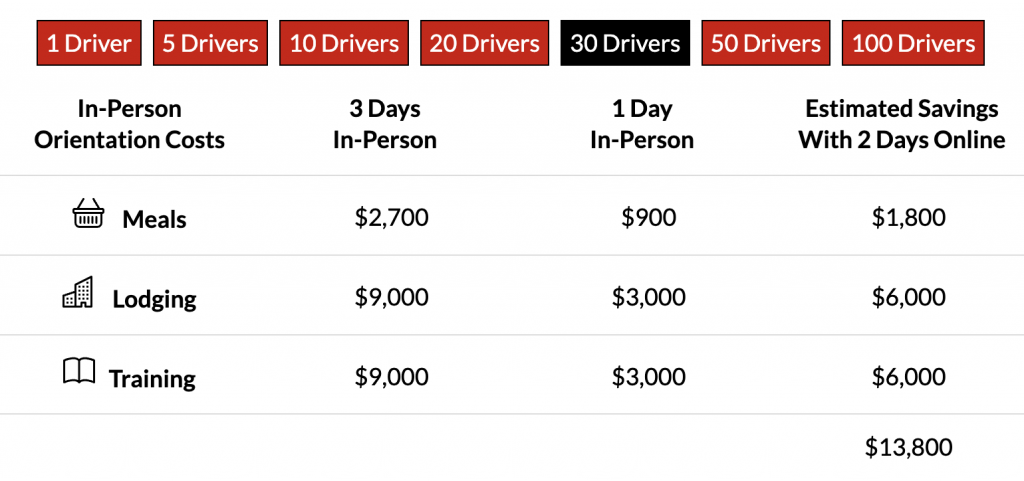Have you ever had the chance to think through each step of your orientation process? How many days does it last? How long are drivers spending filling out paperwork? How much does the process cost, including meals and lodging?
For many carriers, driver orientation is a complex process consisting of several steps that can be streamlined to save money and get drivers on the road faster. With the industry subject to unpredictable changes and economists predicting a possible recession, now is the perfect time to assess your process.
Two Different Processes
To highlight where hidden expenditures can lurk within a company’s onboarding process, let’s take a look at two fictional carriers and what their new driver orientation processes look like.
Trucking Company A
Company A offers a 3-day onsite orientation that includes a hotel room, daily lunches, and $100/day for each driver.
When a driver arrives, he’s brought to a local clinic for DOT physical and drug testing, which can take an entire day.
On the second day, the driver begins filling out all his paperwork. Company A requires each of their 32 paper documents to be signed, and drivers must also complete required paperwork like I9s, W4s, and W9s onsite. Starting around noon, drivers are trained on the company’s safety policies, which lasts the rest of the day.
On the third day, drivers review hours of service, ELDs, and company benefits policies. Once the driver’s drug test results are returned and physicals are cleared, he is reviewed via an online spreadsheet to be cleared for hire. Once he’s been cleared, he gets assigned a truck, introduced to his driver manager, walked to his truck, and dispatched on his first load.
Trucking Company B
Company B offers a 1-day onsite orientation that comes with a hotel, lunch, and $100 orientation pay for each driver.
Before a driver shows up at the terminal, her DOT physical and drug screen results have already been returned and approved.
As drivers arrive, they use their cell phones (Company B provides tablets if they don’t have a smart phone) to log into the Tenstreet Portal or their Driver Pulse app to review and sign forms, as well as upload images and documents that they didn’t complete prior to arriving.
While in class, the Orientation Coordinator assigns the group some final online forms that must be completed in person. With a typical class starting at 8:00am, the forms and documents portion of class is normally complete by 9:00am.
With a goal of having new drivers seated in their trucks by 2:00pm, that leaves six hours for training and other tasks required to complete the orientation handoff to operations. During that time, the driver is assigned specific Tenstreet training courses to complete on her phone. After those courses are completed, the driver reviews company health benefits, 401K information, and overall company culture.
As 2:00pm approaches, the Orientation Coordinator verifies via checklist that each driver is cleared for hire. Once a driver has been cleared, she is introduced to her driver manager, walked out to her truck, and dispatched on her first load.
Two Different Orientation Spends
As you can see, Company A’s orientation process could cut costs and time expenditures significantly compared to Company B’s process.
Company A’s cost-per-driver to complete orientation is an estimated $630 ($100 hotel for 3 nights; $10 lunches for 3 days; $100 orientation pay for 3 days). If the company hired 7 drivers per week, they would spend $4,410 on orientation each week.
Meanwhile, Company B’s 1-day orientation process results in a cost-per-driver of $210 ($100 hotel for 1 night; $10 lunch for 1 day; $100 orientation pay). If they also hired 7 drivers per week, they would spend $1,470 on orientation each week.
The cost difference between these two processes is staggering. If Company A switched to Company B’s timeline, they would save $2,940 a week – and $152,880 a year.
The Cost of An Empty Truck
Carriers can take the potential savings even further when considering the cost of trucks sitting empty. Truck payments are made monthly, but by dividing the monthly lease payment on a truck by the number of days in that month, you can arrive at a daily cost of owning the truck.
For example, if a truck costs $1,800 a month to lease, in a 30-day month, a carrier pays $60 a day to own that truck – whether it’s running loads or not.
During their 3-day orientation process, Company A is paying $180 to own a truck that’s sitting empty until the driver gets underway. Meanwhile, Company B’s 1-day orientation process means they’re only paying $60 on orientation day before their hired driver gets underway and starts making money.
Now think about those costs annually when considering that these carriers hire 7 drivers a week. Company A pays $1,260 a week for trucks sitting empty – which adds up to $65,520 a year of truck leases on vehicles that aren’t bringing in a profit. Company B, by having just one day of orientation, is only paying $420 a week on trucks that aren’t running loads, which amounts to a more manageable $21,840 a year.
Turning Orientation Days into Profit Days
If you’re a carrier who’s ready to take the necessary steps to shorten your process, you can turn orientation days into profit days. By seating a driver in a truck sooner, you start making profit sooner.
Since all carriers earn a different amount of revenue per day, get out your calculator and substitute your own profit number and driver hiring numbers into the following formula:
- Net profit per truck, per day (NPTD)
- Drivers hired per week (Hires)
- Reducing 3-day orientation to 1-day of orientation = 2 additional days on the road (2)
NPTD * Hires * 2 = Orientation Net Profit
This equation is a simplification of the many complexities that affect your profits, but hopefully it gives you a sense of just how much you can save by focusing on optimizing your onboarding and orientation processes.
Get Help From Us
Small costs, multiplied over time, can lead to huge line items in your budget. Tenstreet’s Professional Services team is here to help carriers find those opportunities to save money and run more smoothly. To schedule time to meet with me or another member of professional services, click the button below and shoot me an email!
Try it out yourself!
Want to see more examples of how much you can save by cutting orientation costs? Check out our onboarding savings estimator!




